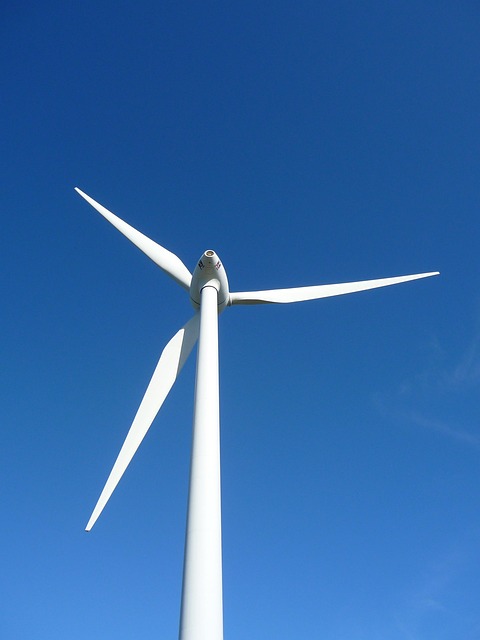
Navigating the Clean Energy Landscape: Challenges and Opportunities
The transition to clean energy is one of the most significant global challenges of the 21st century. As the world grapples with the consequences of climate change, the demand for sustainable and renewable energy sources has never been higher. However, this landscape is riddled with complexities that present both hurdles and promising opportunities. Understanding these challenges and opportunities is crucial for governments, businesses, and individuals looking to navigate the future of energy.
Understanding Clean Energy
Clean energy refers to energy derived from renewable, zero-emission sources that do not pollute the environment. This encompasses a variety of energy sources, including solar, wind, hydroelectric, geothermal, and biomass. Each of these sources offers unique benefits and challenges, but collectively they provide a pathway toward reducing carbon footprints and combating climate change.
The Current State of Clean Energy
As of 2023, the global clean energy market is expanding at a remarkable pace. Governments are investing heavily in renewable technologies, and private enterprises are stepping up to create innovative solutions. The International Energy Agency (IEA) has projected that clean energy could make up the majority of the world’s energy mix by 2050, reliant on continued advancements in technology, accessibility, and regulatory frameworks.
Challenges in the Clean Energy Transition
Infrastructure Limitations
One of the most pressing challenges in the clean energy landscape is the existing energy infrastructure. Many countries rely heavily on fossil fuels, with infrastructures designed for centralized power generation from coal, oil, and gas. Transitioning to decentralized renewable sources requires significant investment in new technologies and upgrades to the existing grid systems. Smart grids, energy storage solutions, and microgrids are essential for maximizing the use of renewables.
Regulatory Hurdles
Another significant challenge is the regulatory environment surrounding energy production and consumption. In many regions, outdated policies and regulations hinder the development and deployment of clean energy technologies. Incentives for renewables, such as tax credits and subsidies, can vary greatly across jurisdictions, making it difficult for businesses to navigate compliance and maximize their investments in clean energy.
Financing and Investment
The transition to clean energy is capital-intensive and requires robust financing options. While public funding plays a significant role, private investment is crucial for developing new technologies. Many projects struggle to secure financing due to perceived risks associated with new technologies and the long timelines often associated with renewable energy projects. Furthermore, without clear regulatory frameworks, investors may hesitate to commit capital to clean energy initiatives.
Public Perception and Acceptance
Public perception plays a pivotal role in the adoption of clean energy. Misconceptions about renewable energy technologies, concerns regarding their reliability, and the aesthetic impact of installations like wind turbines can hinder community acceptance. Educating the public about the benefits of clean energy solutions is essential to overcoming these hurdles.
Technological Barriers
While advancements in clean energy technologies have made significant strides, challenges remain in efficiency, storage, and continuous power generation. For instance, solar and wind are intermittent energy sources that require reliable methods of energy storage to ensure a stable supply. Research and innovation are necessary to overcome these technological barriers and develop more efficient power generation and storage solutions.
Opportunities in Clean Energy
Job Creation and Economic Growth
The clean energy sector has the potential to drive job creation and stimulate economic growth. According to various reports, this sector could create millions of jobs globally over the coming decades, ranging from research and development to installation and maintenance. The transition to clean energy offers an opportunity to not only combat climate change but also create sustainable job pathways in emerging industries.
Innovation and Technological Advancements
As the demand for cleaner energy solutions continues to rise, there is ample opportunity for research and innovation. Emerging technologies, such as advanced energy storage systems, artificial intelligence for energy management, and carbon capture and storage, are on the forefront of energy transition. These innovations not only have the potential to improve efficiency and reliability but can also lead to the development of entirely new industries, further diversifying economic growth.
International Collaboration and Knowledge Sharing
The global nature of the clean energy challenge requires collaboration between nations, industries, and academia. Sharing knowledge, strategies, and technologies can help accelerate the transition to clean energy worldwide. International agreements, such as the Paris Agreement, provide a framework for nations to work together toward common goals in emissions reductions and sustainable development.
Enhanced Energy Security
Investing in clean energy can enhance energy security by reducing reliance on imported fossil fuels. Countries can diversify their energy sources, decrease their vulnerability to political instability in fossil fuel-producing regions, and promote energy independence. This energy security strengthens the resilience of economies and communities, allowing them to better withstand energy price volatility and supply disruptions.
Environmental and Health Benefits
The shift to clean energy offers significant environmental and health benefits. Reducing reliance on fossil fuels has the potential to decrease air and water pollution, mitigate greenhouse gas emissions, and protect ecosystems. A cleaner energy transition not only enhances the quality of life for current generations but also positions future generations to thrive in a healthier environment.
Strategies for Navigating the Clean Energy Landscape
Successfully navigating the clean energy landscape requires a multi-faceted approach. Below are several strategies that governments, businesses, and individuals can adopt to overcome challenges and seize opportunities.
Investing in Education and Training
Education and workforce training initiatives are crucial for facilitating the transition to clean energy. Developing programs that equip workers with skills relevant to the clean energy sector can enhance job readiness and encourage participation in new markets. This not only benefits individuals seeking employment but also strengthens the entire clean energy industry.
Incentivizing Research and Development
Governments and private entities must prioritize funding for research and development in clean energy technologies. Fostering an environment where innovators can collaborate and explore creative solutions can accelerate technological advancements and lower costs. Public-private partnerships can play a vital role in driving innovation forward.
Formulating Clear Policies and Regulations
Establishing clear and consistent policies that encourage renewable energy investment is fundamental for fostering a stable market. Streamlining permitting processes and providing long-term incentives can alleviate some of the hesitancies that investors face. Transparency in regulations can promote confidence among businesses and drive more funds into clean energy solutions.
Building a Resilient Energy Infrastructure
As the energy landscape evolves, upgrading existing infrastructure to support clean energy integration is critical. Investments in smart grid technology, energy storage solutions, and microgrid developments can maximize the efficiency of renewable sources. Collaborating with utility companies and stakeholders is essential for modernizing our energy systems.
Conclusion
The transition to clean energy is complex, filled with both challenges and opportunities that require coordinated efforts across multiple sectors. While infrastructure limitations, regulatory hurdles, and technological barriers exist, the path forward is also paved with promise—job creation, technological innovations, and enhanced energy security. By investing in education, incentivizing research, and formulating clear policies, we can navigate the clean energy landscape effectively. The challenge is monumental, but the potential rewards—an environmentally sustainable, economically prosperous, and health-conscious future—are within our grasp. As individuals, businesses, and governments commit to overcoming these challenges, we can collectively pave the way for a cleaner and brighter world.



